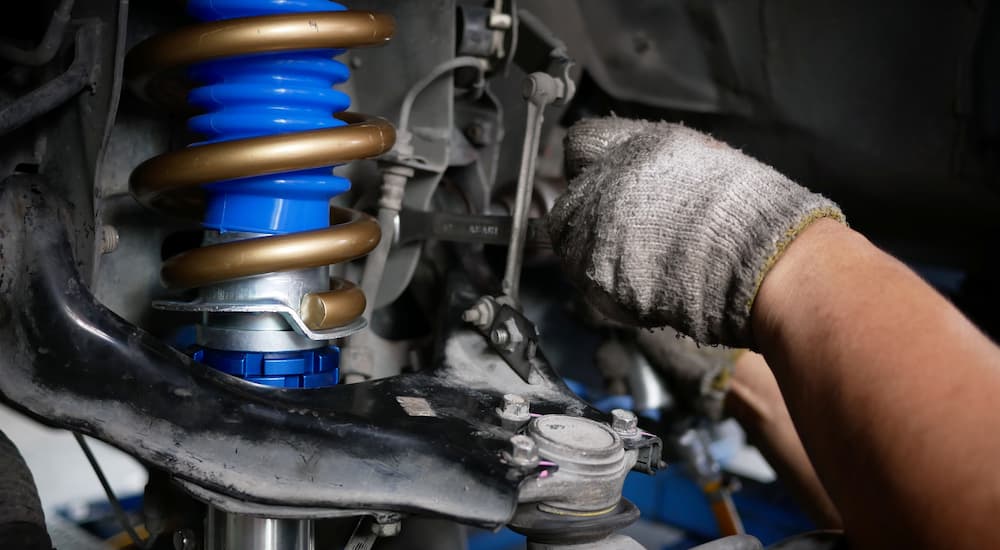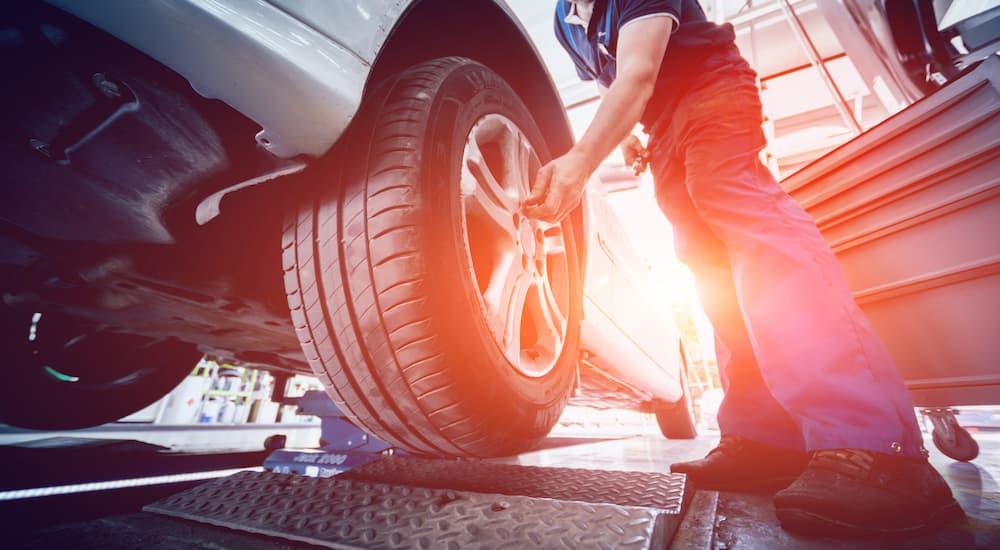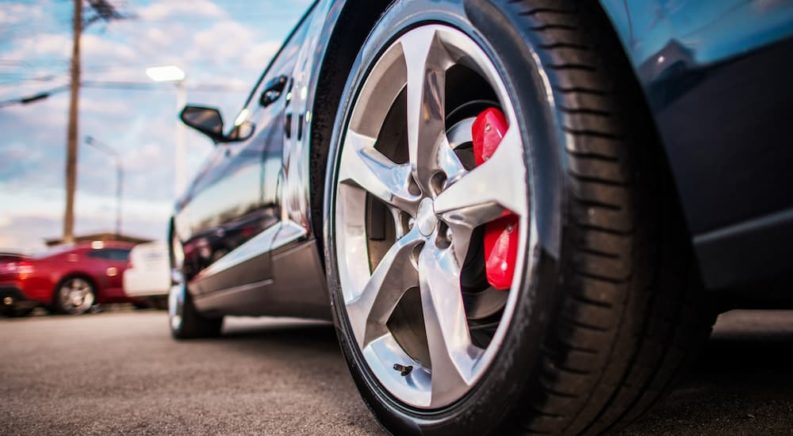The suspension is one of the most important parts of your vehicle, so much so that it’s often considered part of your car’s safety equipment. Your vehicle’s suspension affects not only the quality of your ride and its handling but your comfort inside and how well you can remain in control behind the wheel. That being said, the standard factory suspension on many cars can leave much to be desired, which is where aftermarket adjustments come into play. Today, we will look at options for lowering your vehicle through suspension modification.
Making aftermarket adjustments and modifications to your car can be a lot of fun, and the results can be quite substantial. There are several different ways you can lower and adjust your vehicle through suspension changes, and it’s important to understand the advantages and potential drawbacks of each. No matter what you do, always take your time to make any changes properly and know what you’re doing; errors or mistakes when changing your suspension can be potentially costly or even catastrophic.
First, Some Suspension Basics
While I’m not about to dive deeply into everything you need to know about your vehicle’s suspension, we need to review a few basics before considering your lowering options. As you may know, your car’s suspension is there to not only connect your wheels to the frame but also to help improve your car’s ride (how smooth it stays on bumpy roads) and handling (how well you stay in control while accelerating, braking, cornering, etc.). Engineers have approached suspension over the last century in many different ways, though modern vehicles tend tohave coil springs, often wrapped around a damper (MacPherson strut) or air springs.

Common Ways to Adjust Your Suspension
If you’re looking to lower your vehicle or make aftermarket changes to your suspension, then I’m guessing your vehicle has basic coil springs. From here, you have four common ways to lower your vehicle by altering the suspension, and we’ll take a look at each. We’ll go over some of the basics of what they can do and look at their pros and cons because each one has distinct advantages and drawbacks.
Springs
First up, we have springs or “lowering springs,” which are exactly what they sound like: new springs for your vehicle’s suspension. You simply replace the stock or factory springs on your vehicle with a new set on both your front and rear suspension designed to lower how high your car rides. This is the simplest option, and it’s a great way to go if you’re looking to lower your car on the cheap or if you’re just starting out with aftermarket customization and want to get a taste for it.
- Pros: This is the cheapest way to lower your vehicle, it’s effective and won’t mess with your overall handling and performance, so it’s great for daily driving.
- Cons: You’ll only get an inch or two of lowering by changing your springs, so this isn’t a dramatic choice. You also don’t have any real adjustability with this option since it’s just a static change.
Coilovers
If you’re feeling a bit more adventurous in your aftermarket efforts, a coilover suspension change is a great way to go. Rather than simply swapping out your springs for new ones, this replaces your shock/strut and the coil springs on your vehicle. Not only are you replacing the stock damper and spring with this method, but you can also install a new adjustable lower mount that allows you to change your ride height. Depending on the kit you choose, you can alter the stiffness of your ride thanks to an adjustable damper piston and choose from specified spring rates as you’re looking at coilover options.
- Pros: Still very accessible even if you don’t have a lot of experience with aftermarket changes; offers a lot of adjustability to let you customize your ride. Works well for daily driving, weekend drag racing, and anything else you want.
- Cons: More expensive than simply getting springs; coilover kits start around $600 and can easily cost thousands of dollars. A bit more involved regarding installation.
Air Bags
Not to be confused with the safety feature, air bags for lowering your vehicle refer to air suspension systems rather than those using traditional shocks and springs. Air suspensions have been around for a long time; there were at least designs for them more than a century ago to be used on carriages, but they’re typically found only on luxury brands. Aftermarket air bags are a simple way to fully upgrade your suspension by not only lowering it but giving you a tremendous amount of control over it.
In fact, control is the name of the game with air bags; these kits include an air suspension with a compressor and air tank, along with controller hardware. You can then use this controller to adjust your suspension on the fly, raising and lowering it as needed, so you can have a sweet lowrider without bottoming out on every speed bump or low driveway. Installation of an air suspension can be tricky, so make sure you’re up to the task.
- Pros: Unbeatable control, not only during installation but while driving, letting you customize ride height at any time. Provides a smooth ride with impeccable handling.
- Cons: One of the most expensive options you can choose for lowering your vehicle and also difficult to install.

Hydraulic
Finally, we have the hydraulic suspension, which is similar to an air bag but uses compressed fluid rather than gas. If you grew up in the 1990s, then you saw plenty of hydraulic suspensions in action in about 90% of all rap videos, with lowriders bouncing and shifting back and forth. That kind of control and extreme functionality isn’t for everyone, but if you want to make your ride bounce and turn heads, hydraulics can’t be beat.
- Pros: Levels of control and extreme performance that surpass any other option, more flashy than air bags.
- Cons: Often the most expensive option, frequently more expensive than air bags for lowering your vehicle. Also difficult to install and requires more ongoing maintenance than other options. A bit of a niche choice.
Things to Consider Before Lowering Your Vehicle
Before you pursue any of these vehicle-lowering options, it’s important that you remember that any adjustment to your vehicle’s suspension will affect how it rides and handles. Even if it improves handling by lowering your car’s weight and center of gravity, this is still a change, and you’ll need to get used to it. It’s important to take your time and become accustomed to how your car responds to you after making any adjustments. Be mindful of how much you’ve lowered your car and how it can increase the risk of bottoming out; a lowered suspension can also cause your tires to wear unevenly or more quickly.
It’s also incredibly important to install any aftermarket lowering you do properly. Incorrect installation can seriously damage your vehicle or compromise your control to such an extent that you get into a collision while on the road. It’s worth spending more money on high-quality kits rather than trying to cut corners and getting something that falls apart or breaks; stick to respected brands that make good components. You also may want to check with your insurance company before making any adjustments to your suspension; they might not cover damage or accidents related to a suspension you’ve altered. Lowering your vehicle can be very rewarding and deliver a more thrilling driving experience; just consider all the factors involved and ensure you do it right.

